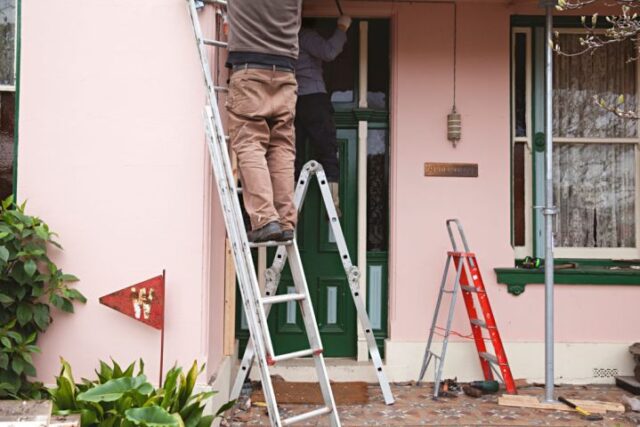
DIY can be an excellent way to save money and learn valuable skills. However, certain tasks require professionals, and shouldn’t be attempted yourself! Keep reading to find out what you really should not be DIY’ing around the home.
Whether you want to hang a painting, change the shower head or install a retaining wall, it can be tempting to grab the nearest toolkit and tackle the task yourself. Whilst many home improvements can be done with little to no prior knowledge, others (generally those involving electricity, water, gas or structure) remain beyond the reach of the average homeowner. So what exactly can you DIY, and what do you need to pass to the professionals? This article explains everything you need to know.
#1 – Major Plumbing
This doesn’t mean small plumbing tasks like changing the shower head we mentioned earlier, but more extensive work like new pipes, sewerage systems and drainage. Failing to correctly seal or install your plumbing can lead to leaks and extensive damage, rendering the tasks more complex and expensive than they originally were. So, if you’re not a trained plumber, don’t attempt plumbing work and get the professionals in instead.
#2 – Asbestos
While homeowners in some countries are legally allowed to remove 10 square feet of non-friable asbestos, they’re not permitted to remove anything over this volume or any loose or friable asbestos. The latter needs to be removed by trained professionals. If you don’t feel confident removing it, or you aren’t sure you have asbestos present, call in the experts who can assess its presence and remove it safely if required.

#3 – Structural Changes
Demolishing structural walls or foundations can put your entire property at risk and impact its integrity. This is even before you discuss the fact that you need permission to structurally alter a property by law. Suppose you need to start changing your home structurally. In that case, you need to gain the correct permissions, and you need to consult with experts who complete the work legally and safely and avoid making any major mistakes that can put people at risk or breach building codes.
#4 – Roof Repairs
Even single-storey buildings can be tricky in terms of roof access despite being less elevated from the ground. Venturing onto the top of your property can put you and the roof at risk, especially if damage is present before you traverse across it.
The angle of a roof, its materials and its height can all pose a risk to the safety of anyone accessing it, so it’s best to leave any roof repairs to those who can work on them safely and avoid any additional damage.
#5 – Gas Repairs
Gas is highly volatile, and undertaking any type of gas repairs when not correctly trained or qualified can be extremely dangerous. Incorrect handling of gas supply or appliances can be fatal, cause extensive damage to properties and people, and put more than just you or your home at risk. So step back, call a gas engineer, and ensure all gas work is completed correctly.
Final thoughts
DIY should never be discouraged. Building your skills up from small tasks to more significant jobs can be a great confidence booster and help you create your ideal home. However, in some cases, it’s always best to leave work to the professionals. Keep these five tasks in mind so you can step away from the temptation to DIY it if the need arises.
MORE – 4 Ways To Improve Your Small Bathroom
MORE – Lessons Learned From Renovations: Tips For 2025
2025-05-15 05:30:00
#DIY #DIY #DIY
Source link
















